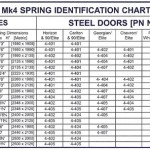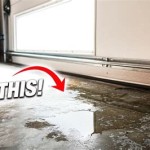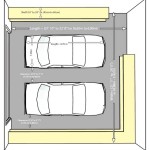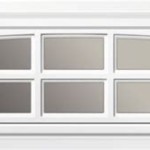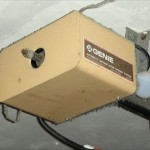How to Replace a Broken Garage Door Spring: A Comprehensive Guide
A broken garage door spring represents a significant inconvenience and a potential safety hazard. The springs, responsible for counterbalancing the weight of the garage door, enable smooth and controlled operation. When a spring fails, the door can become difficult, or even impossible, to open and close, potentially leading to injury or damage. This article provides a comprehensive guide on how to safely and effectively replace a broken garage door spring. This task requires mechanical aptitude, a thorough understanding of the risks involved, and adherence to strict safety precautions. If unsure about any step, it is strongly recommended to contact a qualified professional.
Before commencing the replacement process, it is crucial to understand the different types of garage door springs. The two primary types are torsion springs and extension springs. Torsion springs are mounted above the garage door opening on a torsion tube. Extension springs are located along the horizontal tracks on either side of the door. This guide focuses primarily on replacing torsion springs, as they are generally considered more dangerous to handle and require specialized tools.
Regardless of the spring type, safety is paramount. Garage door springs are under immense tension, and improper handling can result in severe injury or even death. Never attempt to replace a garage door spring without understanding the potential dangers and taking appropriate precautions. Disconnecting the opener, clamping the door, and using the correct tools are critical steps in mitigating risk.
Key Point 1: Essential Safety Precautions and Preparations
The initial phase of replacing a broken garage door spring involves meticulous safety precautions and comprehensive preparation. This stage is not merely a formality; it is the cornerstone of a safe and successful spring replacement.
First, disconnect the garage door opener. Locate the power outlet for the opener and unplug it. This prevents accidental activation of the opener during the repair process, which could lead to serious injury. Additionally, if the opener is hardwired, turn off the corresponding circuit breaker in the electrical panel.
Next, secure the garage door. Since the broken spring will no longer provide counterbalance, the door is prone to uncontrolled movement. Use C-clamps or locking pliers to firmly clamp the door to the horizontal tracks on both sides. Ensure the clamps are positioned securely and tightly enough to prevent the door from moving upwards. This step is crucial for preventing the door from slamming shut during the spring replacement process.
Gather the necessary tools and materials. Specific tools required for torsion spring replacement include: winding bars (typically ½ inch diameter), a socket set, a wrench, a screwdriver, a hammer, safety glasses, work gloves, and the correct replacement spring(s). Ensure the replacement spring matches the dimensions and specifications of the original spring. This information can usually be found on a sticker located on the spring itself. Measuring the wire diameter, inside diameter, and length of the spring is also important. If replacing one torsion spring, consider replacing both simultaneously, as the second spring is likely to fail soon after the first due to similar wear and tear. Gather all these items before starting to minimize interruptions and maintain focus.
Wear appropriate personal protective equipment (PPE). Safety glasses are essential to protect eyes from flying debris during the process. Work gloves provide a better grip and protect hands from sharp edges and potential injury.
Key Point 2: Removing the Broken Torsion Spring
Following the safety precautions, the next step involves removing the broken torsion spring. This requires careful and controlled release of the remaining tension in the spring.
Insert one winding bar into one of the winding cones holes and use it to hold the spring steady. Loosen the set screws on the winding cone. These screws secure the spring to the winding bar. Once loosened, insert the second winding bar into another winding cone hole. Hold the spring with the second winding bar and remove the first winding bar. Loosen the set screws on the stationary cone (the cone attached to the center support bracket), and slide the cone away from the bracket.
Slowly and carefully unwind the spring. Use the winding bars to gradually release the tension. Insert one winding bar into a winding cone hole, bracing it against the garage door header. Loosen the set screws on the winding cone. Insert the second winding bar into another winding cone hole. Hold the spring securely with the second winding bar, and then carefully remove the first winding bar. Rotate the winding bars in a controlled manner, releasing approximately a quarter turn of tension at a time. This ensures that the stored energy is released gradually and safely. Continue this process until all the tension is relieved from the spring.
Once the spring is completely unwound, loosen the set screws on the stationary cone and the winding cone of the broken spring. Slide the spring assembly off the torsion tube. It may be necessary to tap the stationary cone with a hammer to dislodge it if it is stuck. Be mindful of any sharp edges or debris that may be present.
Disconnect and remove the broken spring components. With the spring assembly removed from the torsion tube, detach any remaining broken pieces. Dispose of the old spring responsibly. Garage door springs are made of hardened steel and can be recycled.
Key Point 3: Installing the New Torsion Spring
With the broken spring removed, the final stage involves installing the new torsion spring and applying the correct amount of tension. This process requires precision and adherence to proper winding procedures.
Position the new torsion spring on the torsion tube. Slide the new spring assembly onto the torsion tube, ensuring it is oriented correctly. Torsion springs are typically marked with a direction (left-wound or right-wound). Position the spring so the winding cone is on the correct side based on the door's configuration. Place the stationary cone against the center support bracket and tighten the set screws.
Wind the new spring. Insert one winding bar into a winding cone hole. Securely grip the winding bar and begin winding the spring. The number of quarter-turns required depends on the height of the garage door. A standard 7-foot door typically requires approximately 35 quarter-turns. Consult the spring manufacturer's instructions or a reputable online resource for the precise number of turns required for the specific garage door height and spring specifications.
Apply the correct amount of tension. After winding the spring the appropriate number of turns, insert the second winding bar into another winding cone hole. Carefully adjust the tension until the door is properly balanced. The door should remain in place when raised halfway. If the door drifts upward or downward, adjust the tension accordingly by either adding or removing a quarter-turn at a time. The goal is to achieve a balanced door that requires minimal effort to open and close manually.
Secure the winding cone. Once the door is properly balanced, tighten the set screws on the winding cone. Ensure the set screws are tightened securely to prevent the spring from unwinding. It is advisable to use a wrench to ensure the set screws are sufficiently tight.
Lubricate the spring. Apply a garage door lubricant to the new spring. This will help reduce friction and extend the life of the spring. Periodically lubricate the spring to maintain smooth operation.
Reconnect the garage door opener. After ensuring the spring is properly installed and the door is balanced, reconnect the garage door opener by plugging it back into the power outlet or turning on the circuit breaker. Test the garage door's operation. Ensure the door opens and closes smoothly and completely. Inspect the spring for any signs of unusual wear or damage. Listen for any unusual noises during operation.
Remove the C-clamps. After verifying that the door operates correctly, carefully remove the C-clamps or locking pliers from the horizontal tracks. Store the tools and materials in a safe and accessible location.

How To Fix Broken Spring On Garage Door Youtube

Broken Garage Door Springs How To Fix Them Greeley Repair

Garage Door Spring Replacement Repair Whitby On

How To Replace A Broken Garage Door Spring Diy

How To Replace A Garage Door Spring Diy Fix

Garage Door Spring Replacement When And Why It S Necessary Moore Overhead

Garage Door Spring Replacement Diy Dangers Discount

How To Replace Broken Torsion Springs Garage Door Spring Replacement Diy

Garage Door Spring Repair Pro Entry Doors

Broken Garage Door Springs Mean Big Problems When To Replace Yours A1 Service
See Also

